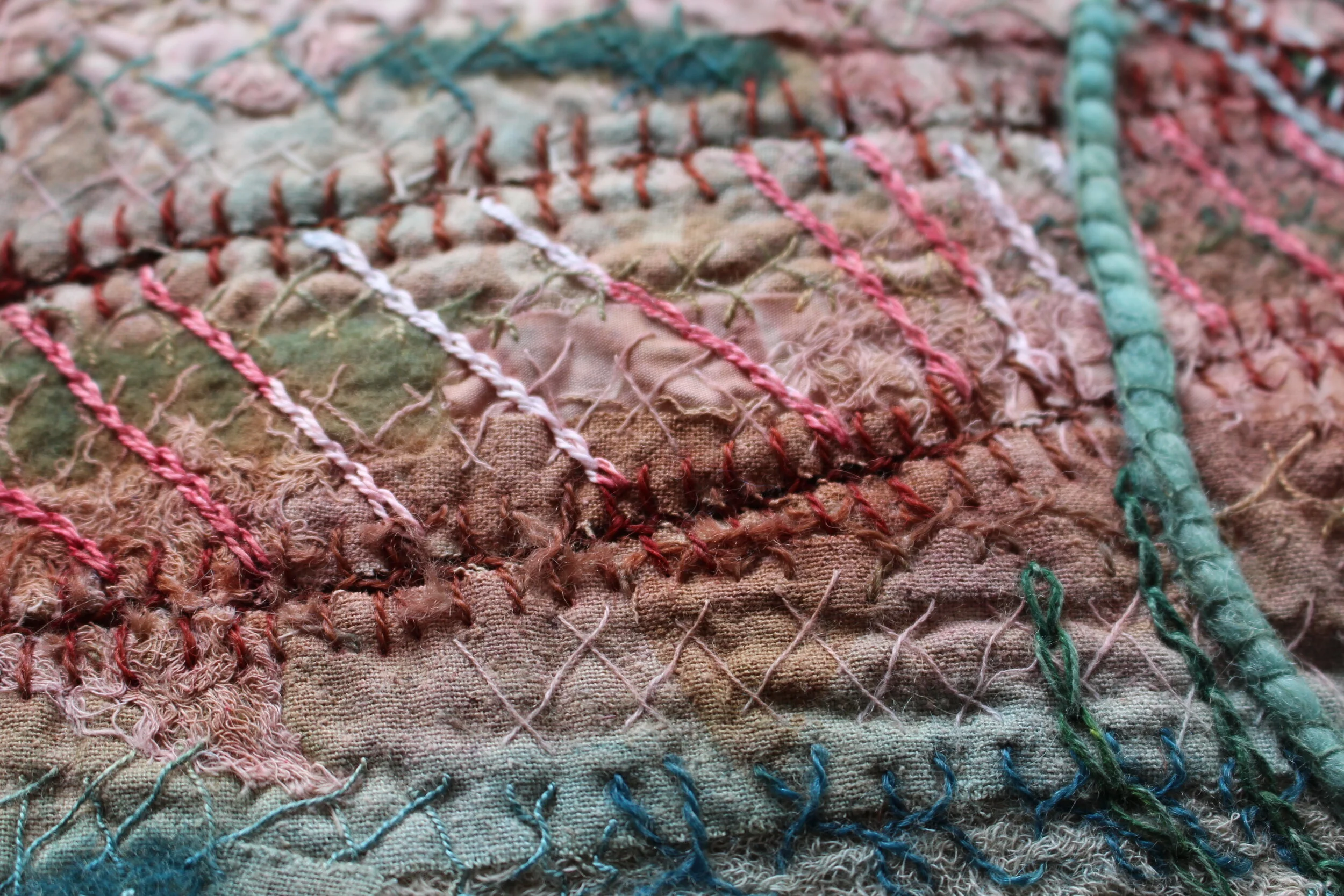When we sit down to work creatively there are two types of sampling. The first is one where we have an idea or goal in mind, maybe we are learning a technique, tool or material and we practice to achieve the correct outcome. The second is the one where we have NO idea of what is going to happen!
As baby creatives, the first scenario is where we start as we establish the foundation of our craft. We grow into the second scenario, sitting with bundles of fibre, thread and fabric, where we say: ‘ok then. Let’s see what we can do’.
The Importance of Play!
When we were very young, that white piece of paper or empty space was a boundless area of opportunity. ANYTHING could happen (and frequently did) when we got our hands on our crayons. Or paint brush. Or modelling clay. When we just relaxed and started to PLAY.
This is the idea of open-ended experimentation. This is the ‘no fail’ state where whatever is created… is created. All we need do is ask, ‘what happens if...?’ This is truly where a maker can mature and find their own way. Their own style. Their own voice. With open ended experimentation we can explore ideas we hadn’t realised were noodling around our brain, test new materials we have discovered as well as new tools and processes we want to try. All this without an idea or end goal in mind.
The Need for Reflection
When we were young, we perhaps didn’t reflect back on what we had done. Or set parameters for our play other than fun. This is an important step with open-ended experimentation. We can analyse the results of what we have accomplished. We can maintain awareness of what we are doing during the making, providing feedback to ourselves to improve what we are doing. We can also evaluate what we have learned once we have finished. Was it what we thought might happen? Or did we discover something new?
Without a set end result we can allow ourselves to make and then see connections that were perhaps invisible to us before. New ideas can bloom from just reflecting on what has been done. Perhaps even coax our creative genius from the corner?
Sampling and Open Ended Experimentation
In textiles, sampling is the area where open ended experimentation can shine. We can discover so much from exploring materials and processes and this can be a springboard for new ideas and approaches.
We can use sampling for design. We can understand design concepts and how they work by applying them in our craft area. We can learn how we want to express ourselves with different design concepts and communicate clearly to others. We can reflect and decide on how we want to grow as makers, producing personal responses in our work.
Perhaps PLAY can be the most CREATIVE activity of all - as long as we can harness its power!

